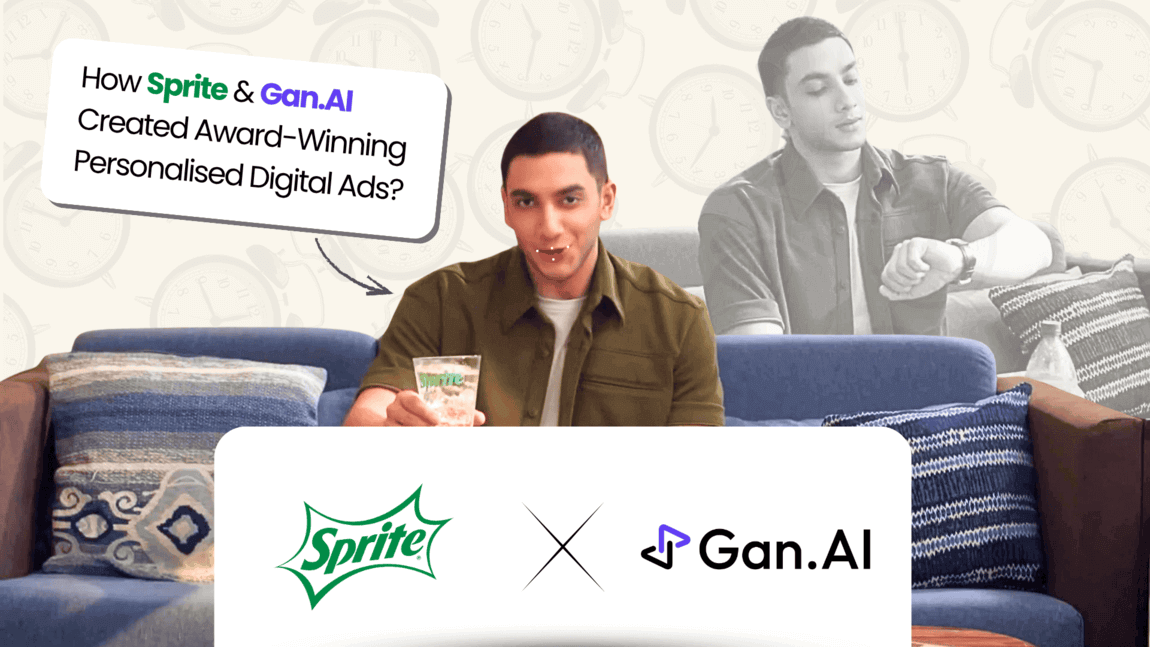How Realistic Speech Generation can Shape India’s EdTech sector
India's education sector is undergoing a seismic transformation, driven by technology that’s not just upgrading classrooms but redefining how learning itself happens. At the forefront of this revolution is realistic speech generation, the latest evolution of Text-to-Speech (TTS) technology. But let’s get one thing straight—this isn’t just about making computers sound less robotic. It’s about how this technology can engage students, break down language barriers, and democratize education for millions of learners in a country as diverse as India.
In a country where over 22 official languages coexist and code-mixing—switching between languages like Hindi and English mid-sentence—is the norm, language is at the heart of learning. Realistic speech generation isn’t just a cool tech trick; it’s a transformative force, particularly in a nation that’s embracing EdTech at lightning speed. And the real question is, how does this shift affect students and educators?
The next frontier of this shift is Myna-Mini, a new TTS API. It supports code-mixing across 22 Indic languages and English, generating a seamless, human-like speech that matches how students and educators communicate every day. Whether it’s learning chemistry in Tamil or history in Hindi, students are getting a voice that resonates with them.
Moving Beyond the Robotic Voices of Early TTS
The Problem with Early TTS Services
Picture this: You’ve loaded up some course material on your browser, it’s a slideshow with an automated VO. You struggle to stay awake as a robotic voice drones on about the Mughal Empire or the laws of thermodynamics. Sounds familiar? That’s the reality of early TTS systems—mechanical, flat, and utterly incapable of holding a listener’s attention. They could convert text into sound, sure, but the experience was often more likely to lull you to sleep than to help you learn.
The problem? These systems lacked any of the emotional depth or nuance that makes human speech so compelling. And for students, especially younger learners, this was a dealbreaker. A report from Indegene that students exposed to monotonous digital voices are less likely to retain information, particularly in subjects like literature or history, where emotional engagement plays a critical role.
Realistic Speech Generation: A Game-Changer in Engagement
Fast forward to today, and we have realistic speech generation, an advancement that takes TTS beyond simple text reading and makes it a fully immersive experience. These systems don’t just spit out words—they replicate the rhythm, tone, and emotional cues that make human speech, well, human. Powered by AI, these TTS models understand the context of what they’re saying and adjust the delivery accordingly. Whether it's explaining a complicated math equation or telling a gripping historical narrative, realistic speech captures your attention.
Think about it this way: If you’re learning about India's freedom struggle, the difference between a monotonous list of dates and a passionate, emotionally charged retelling is massive.
This is where Myna-Mini truly shines. It not only delivers human-like speech, but it does so across a range of languages, blending English seamlessly with regional languages like Hindi, Tamil, or Marathi. For Indian students—who are often juggling multiple languages—this makes all the difference. Finally, the learning environment feels relatable, natural, and, most importantly, engaging.
Code-Mixing: The Backbone of Multilingual Learning in India
Why Code-Mixing is Essential in Indian Classrooms
Now, if you’ve ever sat in a classroom in India, you know that education here isn’t confined to one language. You might start a sentence in Hindi, slip into English for technical terms, and finish with a phrase in your regional language. This linguistic fluidity, or code-mixing, is baked into India’s educational DNA. It’s a necessity when you’re teaching subjects like science or mathematics, where specialized terminology often lacks a direct translation in regional languages.
An OpEd by Dr. Sameer Kumar suggests that Indians use code-mixing as a natural part of their daily interactions. For students, this would be true both inside and outside the classroom. So, any educational tool that doesn’t support this fluidity risks leaving students confused, disconnected, and—worst of all—disengaged.
How Realistic Speech Generation Handles Code-Mixing
Previous TTS systems were clueless when it came to code-mixing. They’d either mispronounce English words in regional language contexts or pause awkwardly, making the switch between languages feel jarring. But that’s all in the past. Modern AI powered text to speech API models, like Myna-Mini, are designed to handle code-mixing effortlessly. These systems can toggle between Hindi and English, Bengali and English, or any of the other myriad language combinations students naturally use.
Let’s break it down: Imagine you’re learning biology in Tamil, and the term “mitochondria” comes up. Myna-Mini can deliver the technical term in English while explaining the surrounding content in Tamil, keeping the flow smooth and natural. And the result? Better comprehension and retention. After all, students are learning in the way they speak—a blend of languages that feels authentic, not forced.
Edutopia found that students’ comprehension rates improved when content was delivered in a mixed-native-language format, especially for complex subjects like mathematics or chemistry. This shows just how important it is for TTS systems to support natural, multilingual learning environments.
Combatting Digital Learning Fatigue with Engaging Speech
The Challenge of Digital Fatigue
Online education, while convenient, brings its own set of challenges. The biggest? Digital fatigue. Spending hours staring at a screen, listening to lifeless, robotic voices, can quickly cause students to disengage. According to this study students report experiencing digital fatigue after just 30 minutes of online lessons, leading to a sharp decline in both attention and comprehension.
And it’s not just a problem for students—it’s a problem for educators trying to make sure their lessons stick. The solution? Engagement. And nothing engages quite like a voice that feels human, with natural pauses, emotional inflection, and a rhythm that mirrors live teaching.
How Realistic Speech Keeps Students Hooked
Realistic speech generation is tailor-made to tackle this issue head-on. Imagine a student logging into a science class on Byju’s—one of India’s biggest EdTech platforms—and hearing a voice that sounds like an actual teacher, not a machine. The voice modulates when explaining difficult concepts, pauses for effect, and adjusts its tone to keep the student engaged throughout the lesson. That’s the kind of experience that keeps students coming back for more, even in a digital format.
By allowing the voice to adapt to different teaching moments—whether delivering a dry mathematical formula or an inspiring historical tale—these systems make digital learning feel more like live instruction.
Realistic Speech Generation and Accessibility: Education for All
The Accessibility Gap in Indian Education
When we talk about education, accessibility is key—and not just in terms of reaching students in far-flung corners of the country. We’re also talking about students with visual impairments, learning disabilities, and those who face other challenges that make traditional text-based learning difficult. According to the World Health Organization (WHO), 8 million Indian students suffer from some form of visual impairment, making it nearly impossible for them to access traditional learning materials.
That’s where realistic speech generation could open doors for millions of students who rely on auditory learning to access educational content. Providing audio that feels natural, human, and emotionally engaging.
How Realistic Speech is Revolutionizing Accessibility
Realistic speech generation goes beyond the basics. By delivering emotionally rich, human-like voices, it ensures that students with disabilities don’t just hear information—they experience it. A robotic voice may give them the content, but a realistic voice brings it to life, helping students to better understand and engage with the material.
For students in rural areas, where access to high-quality educational content has always been a challenge, Myna-Mini’s support for regional languages is a game-changer. Many students in these areas are not fluent in English or even Hindi, meaning that lessons delivered in these languages can feel alienating. But with realistic speech systems that support regional languages like Telugu, Marathi, or Kannada, these students can access the same level of education as their urban peers—without the language barrier.
Real-World Impact: EdTech Platforms Already Adopting Realistic Speech
Byju’s: Multilingual Learning
When we think of leaders in Indian EdTech, Byju’s is the first name that comes to mind. And for good reason. Byju’s is at the forefront of incorporating linguistic accessibility into its platform, offering a multilingual learning experience that resonates with students across the country. Whether it’s delivering a physics lesson in Bengali or explaining algebra in Tamil, Byju’s ensures that the content is both engaging and linguistically accessible.
What’s more, Byju’s has loosely mentioned an increase in retention rates among students who utilize lessons in their native language.
The Future: Personalization and Realistic Speech in EdTech
AI-Driven Personalized Learning
As we look toward the future, it’s clear that the combination of AI-powered personalized learning and realistic speech generation will further revolutionize education in India. Imagine this: a digital tutor who speaks to students in their language of choice, adjusts the pacing of lessons based on individual learning speeds, and even changes tone or vocabulary to suit a student’s emotional state. This isn’t a pipe dream—it’s the direction in which EdTech is headed.
In a country like India, where skilled teachers are in short supply, this kind of personalized, AI-driven learning can bridge a gap that traditional methods have long struggled to address. Realistic speech will be the key to making this kind of adaptive learning feel engaging and human, even in a digital format.
Myna-Mini: Paving the Way for Multilingual, Personalized Education
While still in its research preview, Myna-Mini already shows enormous potential for shaping the future of multilingual education in India. Being the first TTS model of its kind to handle code-mixed speech across 22 Indic languages makes it a powerful tool for ensuring that students from rural areas have access to the same quality of education as those in cities. And as AI-driven personalized learning becomes more sophisticated, Myna-Mini’s capabilities will only expand.
.avif)

%201.svg)
















